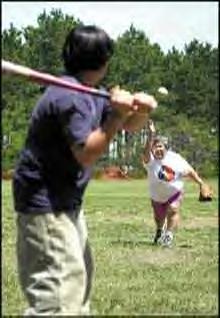|
|
Canku Ota |
|
|
(Many Paths) |
||
|
An Online Newsletter Celebrating Native America |
||
|
June 2, 2001 - Issue 37 |
||
|
|
||
|
Tribe Fighting Diabetes |
||
|
by ANTOINETTE RAHN |
 WISCONSIN
RAPIDS The Ho-Chunk Nation is stepping up efforts to prevent diabetes by arming itself with tips on good nutrition,
expanded activity programs and a wealth of community support. WISCONSIN
RAPIDS The Ho-Chunk Nation is stepping up efforts to prevent diabetes by arming itself with tips on good nutrition,
expanded activity programs and a wealth of community support.Our focus in this is to make people more healthy and prevent the onset of diabetes and complications associated with the disease, Pam Reimer, community health nurse for the tribes Health and Social Services office in Nekoosa. The Nekoosa site is a field office of the Ho-Chunk Nation Central Health Office in Black River Falls and one of seven participating in the community mobilization effort, a program that makes grant money available to Ho-Chunk Nation communities to use in prevention of diabetes. The local effort got under way with a visit in April from the Black River Falls diabetes prevention team, and Elaine Miles of Northern Exposure fame and spokeswoman for the American Indian Diabetes Association. Recently, more than 50 tribal members gathered for an afternoon picnic, including physical activity, healthy dining and discussion about diabetes. It was a good turnout, said Ken Cornelius of Nekoosa. I think it was encouragement for our youth, and educational. To me, the diabetes program promotes physical activity and strengthens us as a group. Each individual adds their own personal involvement, and other people see that, and it encourages them. I'm very proud to be part of this program. Throughout the day, youth and elders alike enjoyed softball, horseshoe, volleyball and a meal low in fat, with lots of fruits and vegetables, Cornelius said. As each participating community examines focus areas, physical activity and fitness programs topped the list in Nekoosa. We talked about how we want to use grant money, and our focus is improving health through physical fitness, Reimer said. In the past, other people decided how the grant money would be used. This time, community members are being asked to decide how they see best to use the money. As the community mobilization effort moves into the next phase, communities are developing action plans to address priority issues, Brenda Owen said Wednesday. She is diabetes coordinator for the Black River Falls office. Some areas are more interested and invested in continuing the mobilization effort. Nekoosa is one of those communities. The community is ready. Potential ideas for improving physical activity opportunities locally include organizing fitness courses, purchasing sports equipment, hosting more events, encouraging activity, developing a fitness trail and expanding diabetes education. Reimer said the tribes next step is to get cost figures for equipment, research services and draft a proposal. We would like to make people aware that physical fitness and nutrition are very important in dealing with diabetes, said Lenora Smith of Vesper, a tribal member. While it is key to have everyone on board with the project, Smith and Cornelius agree, much of the encouragement for the program has come from tribal elders. Elders were there at the picnic because they are interested not only in their own health but the health of their children and grandchildren, too, Smith said. When an elder is present, it really means it is something which is important. I think this is an important program. |
|
Indian Health Service National
Diabetes Program |
|
Diabetes and American
Indian Elders |
|
|
||
|
|
||
| Canku Ota is a free Newsletter celebrating Native America, its traditions and accomplishments . We do not provide subscriber or visitor names to anyone. Some articles presented in Canku Ota may contain copyright material. We have received appropriate permissions for republishing any articles. Material appearing here is distributed without profit or monetary gain to those who have expressed an interest. This is in accordance with Title 17 U.S.C. section 107. | ||
|
Canku Ota is a copyright © 2000, 2001 of Vicki Lockard and Paul Barry. |
||
|
|
|
|
|
The "Canku Ota - A Newsletter Celebrating Native America" web site and its design is the |
||
|
Copyright © 1999, 2000, 2001 of Paul C. Barry. |
||
|
All Rights Reserved. |
